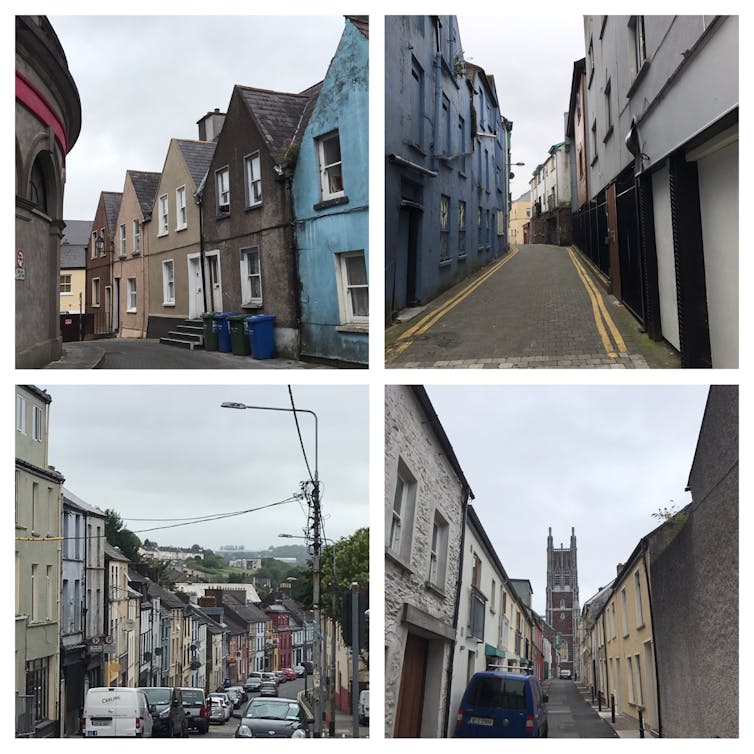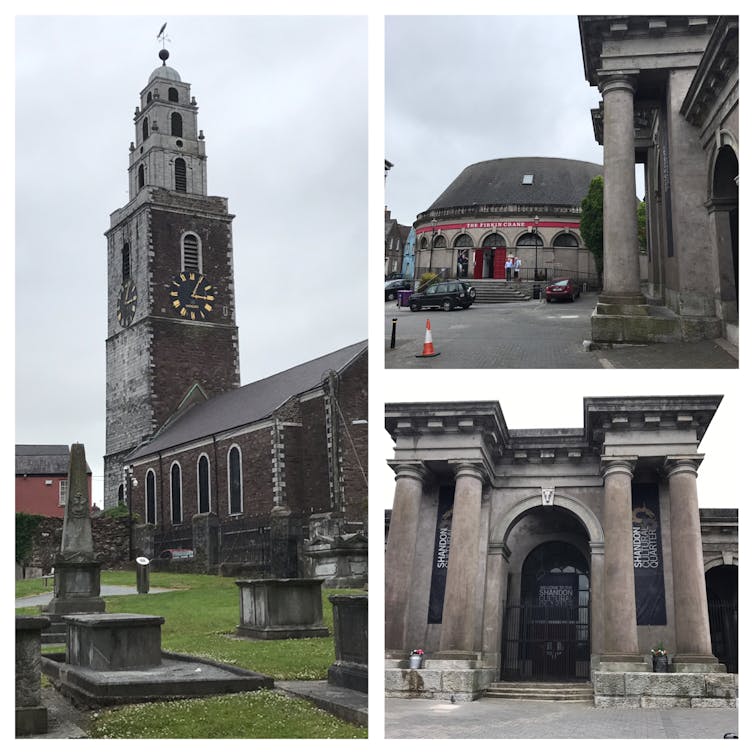Inner-city neighbourhood shows the way in protecting heritage of centuries past
- Written by Tony Matthews, Lecturer in Urban and Environmental Planning, Griffith University
This article is part of our Building on Heritage series on preserving heritage buildings and places while making them as sustainable as possible.
Conservation of built heritage protects buildings and spaces, but can also lead to confusion, contention or resentment. Property owners and planners clash when conservation strategies are perceived to unreasonably impede development. Effective community participation in conservation decisions can reduce these conflicts, as our research found in Shandon, an inner-city district of Cork, Ireland.
Shandon dates back to the 1600s. It is a high-density urban area, with an intriguing mix of architectural styles and rich built heritage.
Conserving urban ensembles like Shandon is an increasing urban planning priority. “Ensemble conservation” protects clusters of buildings, streetscapes, or entire districts.
By preserving cultural capital for future generations, conserving these areas can promote inter-generational equity. The inclusion of urban ensembles as the largest category in the UNESCO World Heritage List is evidence of their importance.
Our research in Shandon shows how competing values shape conservation decisions. We found high levels of community support for the conservation of ensembles, but the issue is also highly political.
 Shandon streetscapes.
Tony Matthews
Shandon streetscapes.
Tony Matthews
Planning for ensemble conservation
Planners play an important role in identifying, regulating and conserving built heritage. The first step is to work with local communities to identify ensembles worthy of conservation. These decisions are based on aesthetic, economic and historic factors, making them contested and value-laden.
Determining what and whose heritage is worth preserving is particularly contentious. Community involvement is essential in shaping decisions and minimising conflicts.
In Irish planning, a conservation ensemble is known as an Architectural Conservation Area (ACA). ACA status provides statutory protection to existing building stock and urban features, and applies strict design and materials standards to new developments. Protections prohibit works with negative impacts on the character of buildings, monuments, urban design features, open spaces and views.
Shandon becomes an ACA
Local residents, traders and artists were influential in the process to gain ACA status for Shandon. The process began informally with early consultations between the community-based Shandon Area Renewal Association (SARA) and Cork City Council. This led to Shandon being designated an ACA under the Cork City Development Plan 2009-2015.
The Cork City Development Plan 2015-2021 maintains broad conservation protections for the Shandon ACA. It also specifically protects 24 keynote buildings and seven protected monuments and places. These include graveyards, churches and views towards St Anne’s Church.
 Keynote buildings in Shandon (clockwise from left): St Anne’s Church, The Firkin Crane, The Butter Exchange.
Tony Matthews
Keynote buildings in Shandon (clockwise from left): St Anne’s Church, The Firkin Crane, The Butter Exchange.
Tony Matthews
The politics of becoming an ACA
A significant concern for the Shandon community was that ACA status could harm private property rights and reduce property values. Sensitive mediation was needed to reassure residents that tighter development standards in ACAs often increase property values in these areas.
Others were concerned that ACA status could turn Shandon into a living museum, or that a focus on tourism would affect the local sense of place. Quite the opposite occurred. Shandon has since become the backdrop for large cultural events championed by the local community. These contribute significantly to the local economy and are a source of pride and connection to the local area.
These events are designed to take advantage of Shandon’s built heritage. For example, heritage buildings were used to great effect as the canvas for a series of reverse graffiti murals depicting past and present citizens of Shandon. It’s also the backdrop for the annual Dragon of Shandon Samhain Parade led by Cork Community Art Link, a local community arts organisation.
Reflections on the Shandon experience
The objectives of ensemble-scale heritage conservation can be highly political – sense of place, ownership of space and local politics come together in this process. Achieving ACA status does not necessarily result in the same outcomes for all communities.
Despite being subject to the same statutory protections as Shandon, the neighbouring ACA of Blackpool has been identified as “a real cause for concern” due to its many poorly maintained and derelict buildings.
Shandon’s experience as an ACA is more successful. An important difference between the two ACAs has been the active involvement of community members, local businesses and residents in the stewardship of heritage assets. This difference in outcomes underscores the importance of local participation in realising the objectives of heritage protection.
Ensuring Shandon benefits fully from its ACA status requires ongoing communication between planners, residents and other stakeholders. Shandon’s experience suggests this is a worthy but at times difficult pursuit.
Authors: Tony Matthews, Lecturer in Urban and Environmental Planning, Griffith University



